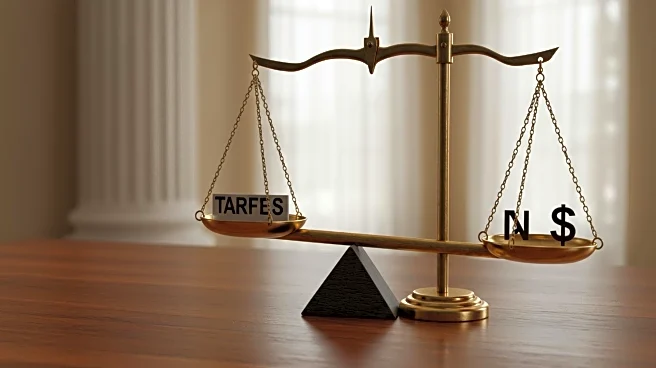What's Happening?
The United States national debt has reached a record $37 trillion, according to a recent report from the Treasury Department. This milestone was achieved years earlier than anticipated, reflecting accelerated federal borrowing and rising interest costs. The Congressional Budget Office had projected that the debt would not exceed this amount until after fiscal 2030, but deficits have accumulated faster than expected. The increase is partly attributed to emergency spending during the COVID-19 pandemic and recent tax legislation signed by President Trump, which is expected to add $4.1 trillion to the debt over the next decade. Treasury Secretary Scott Bessent has emphasized that government spending levels are unsustainable, although he believes future growth and tariffs will offset the costs of tax cuts.
Why It's Important?
The rapid increase in national debt poses significant challenges for the U.S. economy. Rising interest payments consume a larger portion of the federal budget, potentially crowding out other priorities and necessitating further borrowing. Economists warn that this trend could lead to higher interest rates, affecting consumer financing costs for mortgages and car loans, and reducing private sector investment. The debt trajectory is largely influenced by legislative decisions on taxes and spending, with recent actions suggesting that deficits will remain elevated. The growing debt burden reflects decades of borrowing to cover persistent budget deficits, exacerbated by demographic trends and rising healthcare costs.
What's Next?
The Treasury Department and policymakers face the challenge of managing the growing debt while balancing economic growth and fiscal responsibility. The Government Accountability Office has outlined potential impacts on households and businesses, including higher financing costs and slower wage growth. As the debt continues to rise, there may be increased pressure on Congress to address the fiscal imbalance through policy changes. The Committee for a Responsible Federal Budget projects significant revenue from new tariffs, which could help offset some of the debt increase. However, sustained efforts will be required to stabilize the debt trajectory and ensure long-term economic health.
Beyond the Headlines
The national debt issue raises ethical and policy questions about intergenerational equity and the sustainability of current fiscal practices. As interest payments consume more of the budget, there is less room for investments in infrastructure, education, and other critical areas. The debt also reflects broader economic challenges, including the need for comprehensive tax reform and healthcare cost management. Long-term solutions will require bipartisan cooperation and a reevaluation of spending priorities to ensure fiscal sustainability and economic prosperity.













